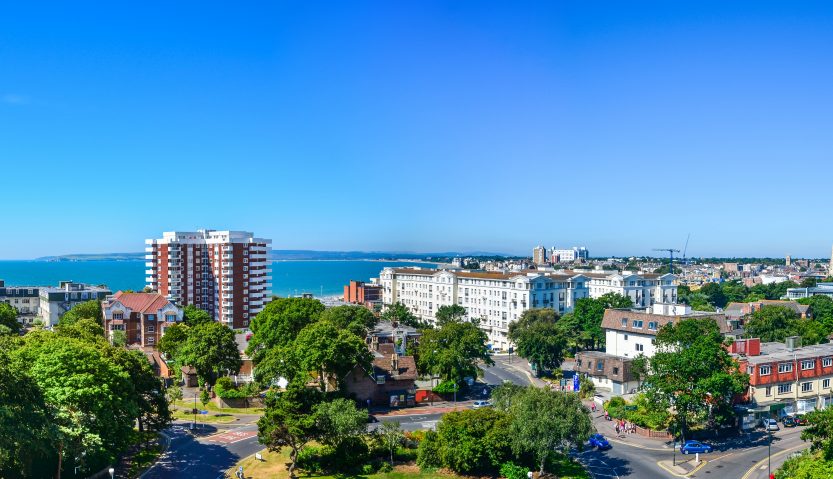Manufacturing, A Potential use in Town and City Centres?
October 2022 | Rufus MitchellA recent policy focus from Central Government has been to reverse the persistent decline of the town and city centres. To achieve this, funding streams such as the Future High Streets Fund (FHSF), Towns Fund and Levelling-up Fund (LUF) allowed Local Authorities to bid for funding to deliver capital projects that increase footfall and dwell time and reduce vacancy rates to revitalise town and city centres.

The main cause of town and city centre decline has been a consumer shift to online retail which has been accelerated by the COVID-19 pandemic. This led to many Local Authorities focusing on diversifying uses away from retail.
With local authorities, architects and engineering companies we have worked on developing many exciting projects in multiple town and city centres focused on increasing the proportion of leisure, culture, public realm, education, housing and service sector-focused commercial space in town, examples include:
- Leisure – Sunderland, Crowtree Square leisure development: new arena and food hall
- Culture – Sunderland, The Culture House: a new state-of-the-art city library and cultural hub with exhibition space
- Public realm – Castleford, Henry Moore Square: enhancement of the main town square through the demolition of poor-quality retail space and landscaping improvements
- Education – Blackpool, Multiversity: a new carbon-neutral world-class learning facility that will enable Blackpool and Fylde College to deliver a high-quality co-developed technical and professional curriculum
- Housing – Darwen, Town Centre Living – the development of two new town centre apartment blocks, 1 on a vacant site and the other on an underutilized multi-storey car park
- Commercial – Castleford Work and Skills Hub
For all these projects there has been a clear and robust rationale, significant stakeholder buy-in, a robust delivery plan and in many cases the backing of the private sector. Based on these factors we are confident they will all contribute to achieving the government’s broad objective to reverse the decline of town and city centres.
However, a notable commercial use that was not explored as an option when developing projects for the FHSF, Towns Fund and LUF funding streams was manufacturing and production. Concepts such as the Meta Industrial City, Reindustrialisation and Industry 4.0 are driving academic research focused on the future of manufacturing in European, American and Asian towns and cities, which has started to attract interest from policymakers.
This has largely been enabled by the 3rd and 4th Industrial Revolutions which have decarbonised and improved the efficiency of certain industries within certain sectors sufficiently to address any historic environmental concerns and reduce costs to enable manufacturing to relocate to countries with higher labour costs.
The researchers and policymakers supporting concepts such as the Meta Industrial City and pilot projects and programmes are presenting a variety of relatively robust local, regional and national, economic, social and environmental rationales for bringing production and manufacturing back into cities and towns. These are summarized below:
| Environment | Economic | Social |
| Reduced supply chain miles | Creation of jobs in the town centre to drive footfall and spend increases | Improved worker access to manufacturing jobs |
| Circular economy opportunities | Reduced reliance on imports | Increased opportunity for those working in the manufacturing sector to live in towns and cities and therefore have better access to leisure and cultural activities; and education and health services |
| Re-use of existing buildings e.g. department stores and shopping centres | Collaboration opportunities to drive innovation and productivity improvements | |
| Accessibility to / opportunity to use sustainable modes of transport for employees | Land Value Uplift | |
| Diversification of town centre uses to improve resilience to macro-economic factors | Empowerment of entrepreneurs and communities to produce products |
Alongside these environmental, economic and social rationales for bringing manufacturing and production industries and businesses back into towns and cities, manufacturing businesses also could benefit from relocating to towns and city centres as this will:
- Provide access to a larger pool of skilled labour;
- Facilitate greater collaboration opportunities with education institutions and businesses from other sectors;
- Enable businesses to be located closer to suppliers and buyers; and
- Enable businesses to capitalise on the increased demand for locally produced goods and products.
Based on these environmental, social and economic rationales, pilot projects and programmes are beginning to explore the feasibility and potential impact of bringing manufacturing and production back into towns and cities.
Since 2018 Seoul Metropolitan Government has been funding ₩300 billion worth of manufacturing support to build Smart Anchor facilities, which are spaces that allow small manufacturing businesses to access high-tech facilities (e.g. joint access to 3D printers) and marketing and sales spaces. One of the Smart Anchors proposed is the Seongsu Silo, an adaptive reuse project that will transform a building into a vertical factory that supports makers of handmade shoes by providing production, marketing and consumer space. Monitoring and evaluating the operation and impact of these Smart Anchor facilities has the potential to improve our understanding of the feasibility and benefits of such facilities in the urban environment, although any lessons regarding best practices need to take account of the local context.
Urban farming is a sector that has started to evidence the viability and benefits of specific manufacturing and production industries in cities and towns, with Aerofarms, a vertical farming company based in Newark, New Jersey, selling products to 200 grocery stores across the northeast of America.
Whilst these projects and industries are beginning to test and evidence the viability of aspects of the Met Industrial City concept, we must appreciate there are still many barriers to bringing manufacturing and production back into town and city centres. These include: planning policy, market confidence, business rates, the availability of suitable space, and real estate values also act as a barrier to manufacturing and production focussed industries locating in town and city centres.
Despite these barriers, it feels as though there have been missed opportunities through the FHSF, Town Deal and LUF Programmes to explore the feasibility of manufacturing and production as a means to diversify town and city centre uses, and therefore missed opportunities to address wider environmental, economic and social challenges that uses such as leisure cannot.
Therefore, I believe future town and city centre regeneration strategies and projects should consider manufacturing and production as an option (alongside uses already been explored e.g. housing, and culture) based on their potential to address a greater variety of challenges.
< Back to News, Views & Insights
More articles
What do the UK political parties have to say about placemaking?
19th June 2024The publication of Reform UK’s manifesto on Monday 17th June saw the last of the main UK-wide political parties release their proposed legislative pitch to the national electorate ahead of the General Election on Thursday 4th July. Now whilst much of the commentariat have understandably tended to hone in on the respective political parties’ plans […]

Making the most of the Three Investment Themes
24th April 2024The £20m endowment-style funding provided to Town Boards through the Long-Term Plan for Towns programme to allocate across three investment themes over the next decade represents a place-based approach to levelling-up which is forward-looking and agile in its approach. Whilst there is no requirement on how towns utilise funding across the three investment themes, the […]

What does art mean to you?
15th April 2024Many people think of art as painting, drawing – the visual arts you go to a gallery to see. But art is much more than that – its any object or experience that communicates an idea, an emotion, or a view of the world, and it can take many forms. ‘Art isn’t just what we […]